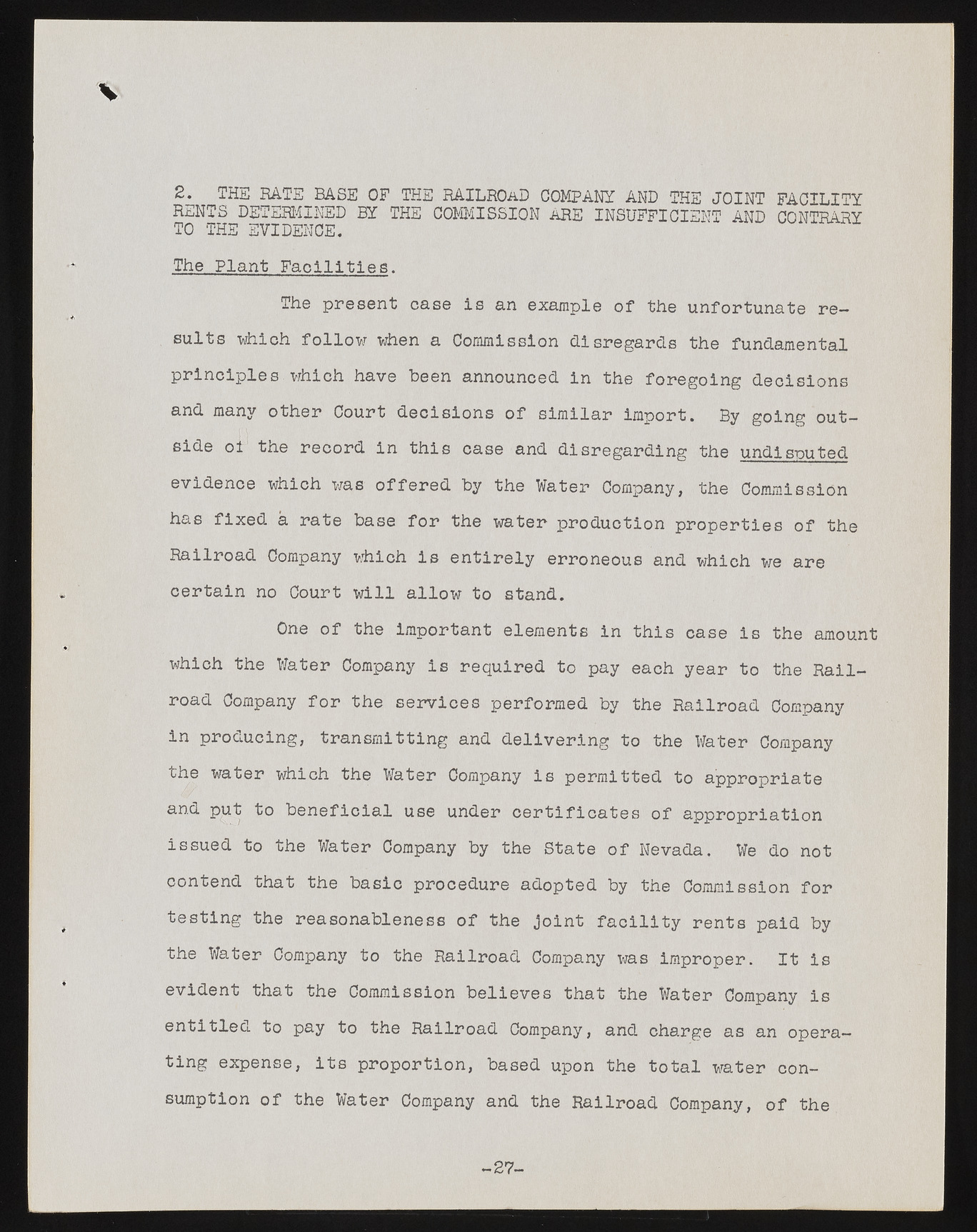Copyright & Fair-use Agreement
UNLV Special Collections provides copies of materials to facilitate private study, scholarship, or research. Material not in the public domain may be used according to fair use of copyrighted materials as defined by copyright law. Please cite us.
Please note that UNLV may not own the copyright to these materials and cannot provide permission to publish or distribute materials when UNLV is not the copyright holder. The user is solely responsible for determining the copyright status of materials and obtaining permission to use material from the copyright holder and for determining whether any permissions relating to any other rights are necessary for the intended use, and for obtaining all required permissions beyond that allowed by fair use.
Read more about our reproduction and use policy.
I agree.Information
Digital ID
Permalink
Details
Member of
More Info
Rights
Digital Provenance
Publisher
Transcription
\ 2. THE HATE BASE OF THE RAILROaD COMPANY AND THE JOINT FACILITY RENTS DETERMINED BY THE COMMISSION ARE INSUFFICIENT AND CONTRARY TO THE EVIDENCE.. The Plant Facilities. The present case is an example of the unfortunate re- suits which follow when a Commission disregards the fundamental principles which have been announced in the foregoing decisions and many other Court decisions of similar import. By going outside oi‘ the record in this case and disregarding the undisputed evidence which was offered by the Water Company, the Commission has fixed a rate base for the water production properties of the Railroad Company which is entirely erroneous and which we are certain no Court will allow to stand. One of the important elements in this case is the amount which the Water Company is required to pay each year to the Railroad Company for the services performed by the Railroad Company in producing, transmitting ahd delivering to the Water Company the water which the Water Company is permitted to appropriate and put to beneficial use under certificates of appropriation issued to the Water Company by the State of Nevada. We do not contend that the basic procedure adopted by the Commission for testing the reasonableness of the joint facility rents paid by the Water Company to the Railroad Company was improper. It is evident that the Commission believes that the Water Company is entitled to pay to the Railroad Company, and charge as an operating expense, its proportion, based upon the total water consumption of the Water Company and the Railroad Company, of the -27-

